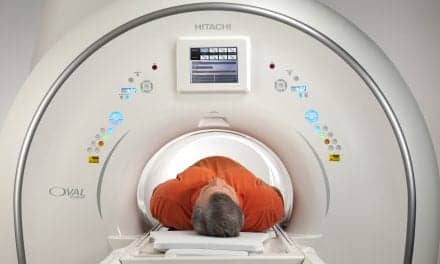
|
· Research Alert: MITA Spotlights Value of PET
· FDG Automation Arrives in the United States
Research Alert: MITA Spotlights Value of PET
The Medical Imaging and Technology Alliance (MITA), a division of the National Electrical Manufacturers Association, recently expressed its take on the results of a nationwide study that examined the impact of positron emission tomography (PET) scans.
Published in the May 1 issue of the Journal of Clinical Oncology, the study discusses PET technology and its benefits for patients with ovarian, prostate, pancreatic, and other cancers.
Andrew Whitman, MITA vice president, called on the Centers for Medicare and Medicaid Services to strongly consider the study as it makes future national coverage decisions.
“MITA applauds the work of Dr Bruce Hillner and his team, which we hope will result in improved treatment and health outcomes for cancer patients with tumor types not currently on the ‘approved’ Medicare list,” Whitman said, adding that PET scans are just one of the many medical technologies that have revolutionized cancer diagnosis and treatment. “These research findings remind us that it’s critical that patients have access to innovative medical imaging technology to help fight cancer and other serious illnesses.”
In the study, Hillner and his group of researchers demonstrated that using PET scans for cancer diagnosis, staging, restaging, and recurrence monitoring was associated with a significant reduction in unnecessary additional procedures. Also, in the aggregate of cases that had an initial treatment plan, referring physicians indicated that PET scanning enabled them to avoid additional tests or procedures 77% of the time. For approximately three-quarters of cases in which a biopsy was the original pre-PET recommendation, PET scanning enabled the procedure to be ultimately avoided.
MITA pointed out that the latest coverage with evidence development study is one of a number of studies that demonstrate the value of PET scanning in cancer diagnosis and treatment. For example, MITA described research efforts led by Paul Verboom, of the Institute for Medical Technology Assessment, Erasmus University Rotterdam, who exhibited the cost-effectiveness of PET scanning. The 2003 study, called “Cost-Effectiveness of FDG-PET in Staging Non-Small Cell Lung Cancer: The PLUS Study,” showed PET scans produced an average savings of 13% through avoiding unnecessary surgery, hospital stays, and intensive care.
“Now more than ever, it’s crucial that patients and policymakers alike look to studies like these as a reminder of why and how medical imaging improves patient health outcomes and reduces overall health care costs,” Whitman said.
FDG Automation Arrives in the United States
With the PET business booming these days, Medrad Inc, based in Warrendale, Pa, has introduced to the market a product addressing the workflow issues that arise from the influx of patients.

|
| Medrad’s Intego PET infusion system is the first in the United States to automate and control the FDG delivery process. |
Enabling health care providers to administer fluorodeoxyglucose at any time throughout the day, the Intego PET infusion system is the first in the United States to automate and control the FDG delivery process.
“FDG PET scanning is one of the most efficient and accurate methods to stage cancer patients,” said Alfred Buck, professor of nuclear medicine at the University Hospital in Zurich. With colleague Bruno Weber, Buck co-invented the machine, built the first prototype, and has been using the device at the PET center at his hospital for the last 4 years. The principle was patented and licensed to Medrad.
“The number of patients receiving PET scans is steeply increasing,” he continued. “With this increased throughput, it is very helpful to have an automatic injection device.”
The system was developed to enhance the clinician’s ability to deliver FDG with accuracy and precision, as well as with safety. It works by automatically extracting a patient dose from a multidose vial and then delivering it directly to the patient. As a result, manual dose preparation and handling is eliminated, as well as radiation exposure for the technologist.
“With respect to single-syringe deliveries, the injector is more economical,” Buck added. “It allows clinicians to deliver a predetermined amount of FDG to each patient with high accuracy. In this way, one can easily adjust the injected dose to the individual patient according to weight.”
Specifically, with its dose-on-demand capability, the prescribed dose is delivered when the patient and technologist are ready. This affords technologists an efficient way to respond to schedule changes, patient delays, and add-on patients. More features include real-time dose availability information, an integrated ionization chamber, and an optional weight-based dose calculation. Among the safety features offered are a tungsten multidose vial shield, a fully lead-lined mobile cart, and an automated saline flush to remove residual FDG from the line after each infusion.
“With our new Intego system that fully automates FDG delivery, we can once again improve how molecular imaging is done,” said Cliff Kress, senior vice president, CT Business Unit.
In related news, Medrad is working with FDG suppliers to provide FDG in multidose vials and vial shields that are compatible with the Intego System. The company recently announced a distribution and co-marketing agreement with radiopharmacy network PETNET Solutions, a fully owned subsidiary of Siemens Medical solutions USA Inc.






